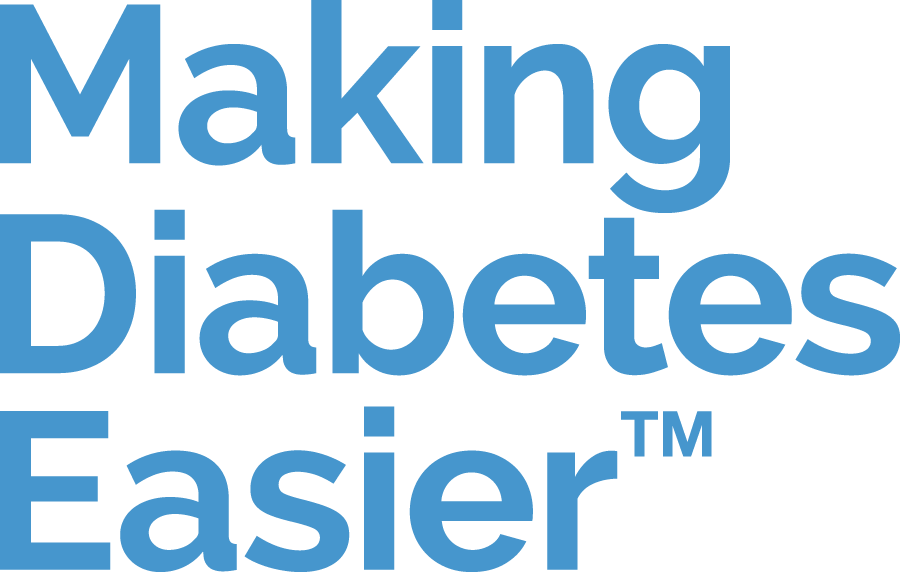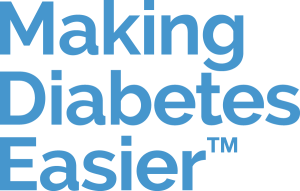Managing type 1 diabetes in children

Managing type 1 diabetes in children
If your child has just been diagnosed with diabetes, you’ll want to know what you can do to help them manage their condition, support their growth and ensure they live a happy and fulfilling life.
This guide covers the key things you need to know about managing diabetes in children, such as the symptoms of the condition and what to do to prevent complications, how to cope at school, what medication to take and whether to make any lifestyle changes.
What to expect if your child has diabetes
Type 1 diabetes can affect children in unique ways.3 For example, a child’s metabolism can be affected quickly, so early diagnosis and treatment are key.1,2 If left untreated, the possible complications of type 1 diabetes can interfere with a child’s learning and impair information processing.2
Living with type 1 diabetes during the teenage years can make an already delicate time even more challenging from an emotional and psychological point of view.2
Parents, school staff and healthcare professionals must collaborate to help young people navigate these challenges.2 With the right support throughout all stages of their development, your child will gradually learn how to successfully manage their condition by themselves, transitioning into an independent life, minimising the risk of complications.1
Learning how to manage type 1 diabetes in children may feel daunting at first, but your child’s healthcare team is there to support you. They’ll help you set up care plans at home and school, covering key aspects of your child’s diabetes management.1,2
By teaching your child how to manage their condition, you can help them gain independence as they grow up and improve their quality of life.1,3
Symptoms of type 1 diabetes in children
In children with type 1 diabetes, blood glucose levels are too high.1 This can cause the following symptoms:3
- Feeling thirsty all the time
- Peeing very often (especially at night) or bedwetting
- Losing weight
Children with type 1 diabetes may also experience:3
- Shortness of breath
- Tummy pain or vomiting
- Feeling generally unwell
To prevent these symptoms and other complications, children with type 1 diabetes must receive a diagnosis and start treatment as early as possible.3 Treatment will likely consist of:3
- Regular blood glucose monitoring
- Insulin therapy
- Learning how to manage the condition through lifestyle changes
As a parent, you may worry when your child gets diagnosed with diabetes; however, with appropriate therapy, blood glucose monitoring and support, they can live an active and fulfilling life.
Insulin therapy for children with diabetes
Children will usually start daily insulin therapy as soon as they receive a diabetes diagnosis.1,2 This treatment may be a combination of:1–3
- Short-term, fast-acting insulin, which your child will take before meals
- Long-term, slow-acting insulin, which will be given only once a day and is released slowly over 24 hours
Your child’s healthcare team will show you how to calculate each dose depending on your child’s blood glucose levels and lifestyle.1–3
The insulin your child needs can be given using an insulin pen or an insulin pump, depending on which is more practical and better suited for your child.2,3 For example, insulin pump therapy may be more suitable for infants and pre-schoolers as well as children who have a fear of needles.2
To learn more about insulin pumps for children, read our dedicated article.
A suitable diet for a child with type 1 diabetes

A suitable diet for a child with type 1 diabetes
Along with insulin treatment, children with diabetes should try to eat a well-balanced diet that helps them manage their condition.1 While there’s no ‘special diet’ for children with diabetes, their meals should be regular, varied and balanced.1–3
A suitable diet should include:1,2
- Fruit
- Vegetables
- Legumes
- Whole grains
- Dairy products
- Limited saturated fats
While your child can still enjoy some convenience food (in moderation!), certain things should be limited – in particular, ultra-processed foods. Examples include sugar-sweetened drinks, chocolate, chicken nuggets, crisps, chips and sweetened breakfast cereals.5
Your child needs well-sized food portions to grow and develop into a healthy adult; however, excess calories can lead to weight gain, and weight management is important in diabetes.1
Children and parents alike should pay particular attention to carbohydrates.1–3 Learn more about carb counting in our article.
Type 1 diabetes at school

Type 1 diabetes at school
In addition to informing the school’s staff, teachers and nurses about your child’s diabetes, it can be helpful to let classmates and their parents know.1–3 Because your child will have to have their blood glucose monitored regularly while in school, the staff need to be aware so they can make any necessary adjustments.1–3 It’s useful for everyone in the school environment to be informed, just in case they can help in an emergency.1
School staff and teachers will adapt to your child’s needs by:6
- Supporting with checking blood glucose levels
- Supervising or supporting with insulin administration
- Recognising the warning signs of hypos and providing access to treatment when needed
- Liaising with you regarding snacks and supervising at lunchtime if needed
- Supervising physical activities
School personnel can also help children with diabetes with their insulin doses, depending on their age and level of independence.1,3
The lifestyle of children with type 1 diabetes
To prevent any potential complications, such as low blood glucose, your child will need help:1,2
- Adjusting their insulin dose
- Increasing their carb intake
- Testing their blood glucose before, during and after exercise
Sports and other forms of exercise are essential, helping children to stay healthy and improving wellbeing in the long term.1 So, in addition to managing their diet, children with type 1 diabetes should participate in regular physical activity.1–3
As a parent, you can teach your child about how they can still have fun while still looking after their health. For example, they’ll learn that they can attend school friends’ birthday parties and enjoy sweets and cakes in moderation.1,4
As a parent, you too may experience higher stress levels and worry over your child’s wellbeing when they’re out with their friends.2,3 Remember that your child’s care team can help with the psychological impact of having a child with diabetes, so don’t hesitate to reach out for support.1,2
Although receiving a diagnosis of type 1 diabetes can be challenging for both the child and their family, there are things parents can do to ensure their child manages their condition properly and avoids the risk of complications.
With the help of their parents and healthcare team, children with diabetes will gradually gain independence and learn how to manage their condition all by themselves.
Sources
- Chiang JL, Maahs DM, Garvey KC, et al. Type 1 diabetes in children and adolescents: a position statement by the American Diabetes Association. Diabetes Care. 2018;41(9):2026–44. https://doi.org/10.2337/dci18-0023
- Neu A, Bürger-Büsing J, Danne T, et al. Diagnosis, therapy and follow-up of diabetes mellitus in children and adolescents. Exp Clin Endocrinol Diabetes. 2019;127(S01):S39–S72. https://doi.org/10.1055/a-1018-8963
- Ziegler R, Neu A. Diabetes in childhood and adolescence. Dtsch Arztebl Int. 2018;115(9):146–56. https://doi.org/10.3238/arztebl.2018.0146
- Smart CE, Annan F, Higgins LA, Jelleryd E, Lopez M, Acerini CL. ISPAD Clinical Practice Consensus Guidelines 2018: Nutritional management in children and adolescents with diabetes. Pediatr Diabetes. 2018;19 Suppl 27:136–54. https://doi.org/10.1111/pedi.12738
- Diabetes and Nutrition Study Group (DNSG) of the European Association for the Study of Diabetes (EASD). Evidence-based European recommendations for the dietary management of diabetes. Diabetologia. 2023;66(6):965–85. https://doi.org/10.1007/s00125-023-05894-8




